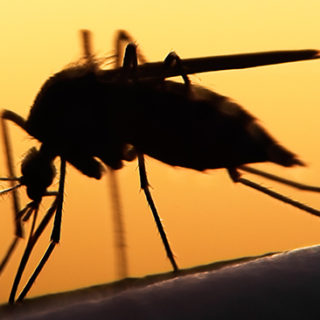What diseases have people suffered and died from through history?
Opinion by Peter M Nilsson, professor of history of medicine, Lund University
Throughout their evolutionary development, humans have adapted to new environments, infectious agents and other health risks. Over a very long term perspective, when average human life expectancy was very limited, this meant that the most important causes of illness and death – besides death in infancy or from trauma, accidents and violence – were various infectious diseases. Human evolutionary adaptation has brought greater chances of survival under hardships such as starvation and epidemics of dangerous diseases like malaria or the plague, for example.
Against this background, we can understand the development which has taken place, alongside the increase of average life expectancy, of the diseases present over the past thousand years. If we ignore causes of death such as external violence, starvation and poisoning, the incidence of illness is still dominated by infectious diseases into the modern era. In these diseases, the presence of the infectious agent can be related to various environmental factors. For example, malaria is only present in certain temperate climates, the prevalence of the influenza virus varies with the seasons, tuberculosis is associated with overcrowded living conditions, diarrhoea occurs in unsanitary conditions with polluted water, and ergotism is caused by a toxin previously common in cereal products such as bread. To these have been added the effects of various toxins which were either a result of abuse or overconsumption, such as alcohol and other intoxicants, or dangerous local environments such as exposure to arsenic, mould or other toxins in the workplace. Only during the past 200 years has a new combination of diseases – a new disease panorama – started to establish itself as life expectancy has increased.
Our lifestyle has changed over the past two centuries with increased access to food, mechanisation of working life and growing use of cars and other forms of transport. Our changed lifestyle has resulted in lower calorie combustion and this excess of calories has laid the foundations for more pronounced obesity and increased risks of cardiovascular disease and type 2 diabetes. For the latter, a role may be played by certain genes, which were selected during evolution for survival by saving energy and fatty deposits during periods of good access to food, for resistance during periods of starvation. A new disease-generating factor was boosted by the breakthrough of industrialisation in the 1800s and the major wars of the 1900s, namely tobacco use, above all in the form of cigarette smoking. This is probably one of the most disease-inducing factors produced by modern civilisation, which has affected the risk of cardiovascular disease and the incidence of cancer, above all during the 1900s. Aging is accompanied by a series of deficiencies and reduced bodily functions which affect the elderly, such as osteoporosis, dementia and hormonal decline. These functions can also be conditioned (programmed) to a certain extent by antenatal factors and early childhood.
“Our lifestyle has changed over the past two centuries with increased access to food, mechanisation of working life and growing use of cars and other forms of transport.”
With improved foetal conditions as a result of preventive antenatal care, and better circumstances for children and youth, as a result of preventive pediatric and school healthcare, the disease panorama has improved. Extensive technical changes can also promote health for different cohorts of children, i.e. reflecting the conditions for children born in different periods. One example of this is the introduction of the refrigerator in ordinary family homes at the end of the 1950s, which enabled food to be kept fresh without being heavily salted. This meant that children and youth raised in the 1960s were less exposed to salt in their early childhood than their parents’ generation, which could explain the phenomenon of age-adjusted average blood pressure values dropping in western populations and in Sweden, despite the increase in body mass index and obesity. Another example is the introduction of radio and TV, which is thought to have positively affected the risk of developing dementia and conditions associated with mental understimulation in old age.
However, new disease risks have also emerged in the present, besides the effects of an unhealthy lifestyle, and may depend on radioactive radiation, environmental toxins, car exhaust, but above all on the Earth’s climate being negatively affected, resulting in increased risk of skin cancer, for example, with the reduction in the ozone layer.
Human development is closely linked to life circumstances, access to food, conditions for foetuses and children, and exposure to harmful environmental influences. However, there are hopeful trends for better global development – reported by the recently deceased Hans Rosling, among others – with increased average life expectancy and, lower global mortality from deficiency diseases. The burden of disease in today’s Swedish population has barely decreased but has shifted into a higher age-group and the panorama for causes of death has changed significantly.
The history of medicine provides us with rich opportunities to study what is known as ‟demographic transition”, i.e. how populations and their health have changed through history depending on access to food and selective pressure, not least through the effects of infectious diseases. Without this knowledge, it is difficult to understand the current combination of diseases and their various manifestations over time (influenced by factors which affected different generations of children), socially and in relation to gender and ethnicity, as populations change through the ages.
Photo: Kennet Ruona








